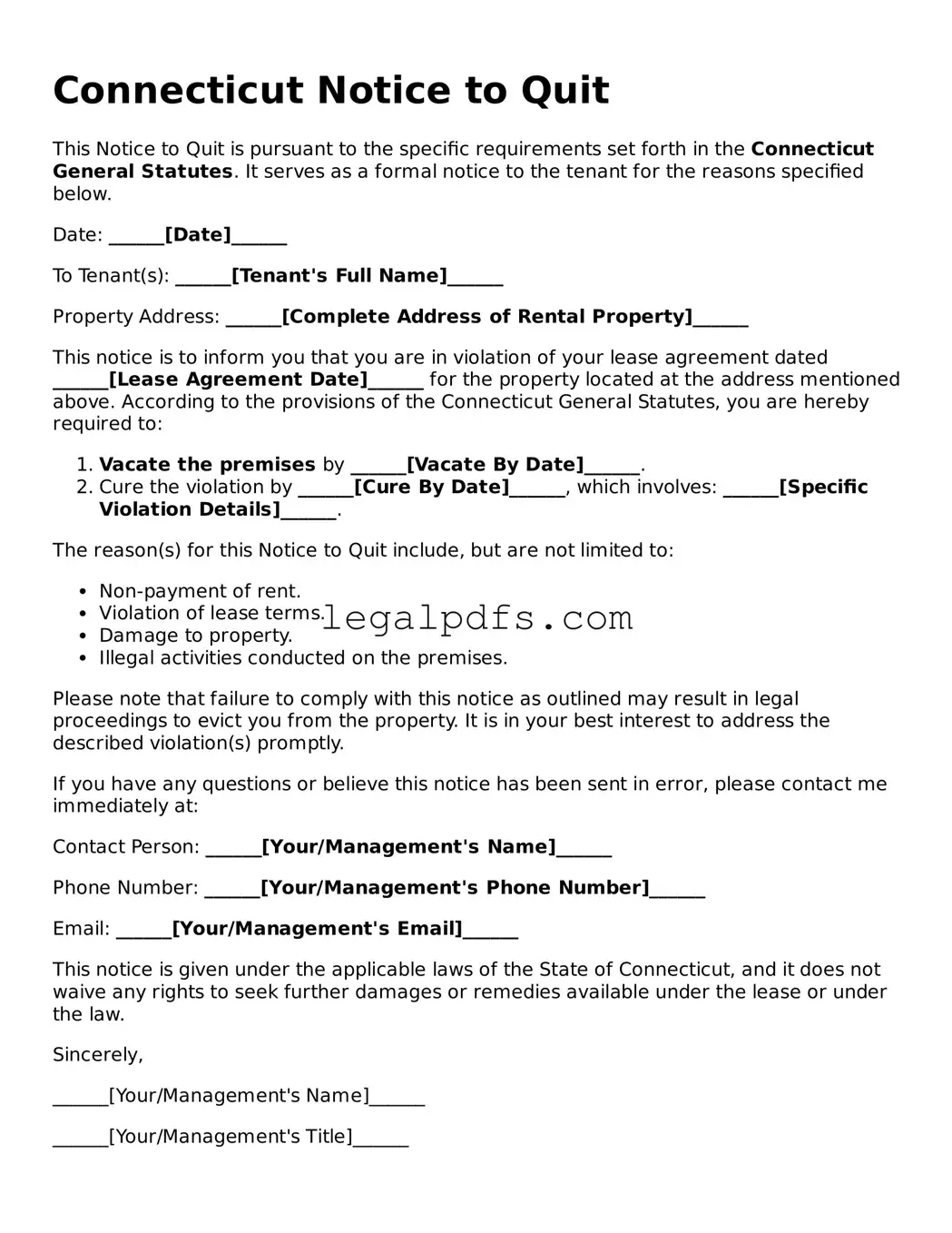Connecticut Notice to Quit
This Notice to Quit is pursuant to the specific requirements set forth in the Connecticut General Statutes. It serves as a formal notice to the tenant for the reasons specified below.
Date: ______[Date]______
To Tenant(s): ______[Tenant's Full Name]______
Property Address: ______[Complete Address of Rental Property]______
This notice is to inform you that you are in violation of your lease agreement dated ______[Lease Agreement Date]______ for the property located at the address mentioned above. According to the provisions of the Connecticut General Statutes, you are hereby required to:
- Vacate the premises by ______[Vacate By Date]______.
- Cure the violation by ______[Cure By Date]______, which involves: ______[Specific Violation Details]______.
The reason(s) for this Notice to Quit include, but are not limited to:
- Non-payment of rent.
- Violation of lease terms.
- Damage to property.
- Illegal activities conducted on the premises.
Please note that failure to comply with this notice as outlined may result in legal proceedings to evict you from the property. It is in your best interest to address the described violation(s) promptly.
If you have any questions or believe this notice has been sent in error, please contact me immediately at:
Contact Person: ______[Your/Management's Name]______
Phone Number: ______[Your/Management's Phone Number]______
Email: ______[Your/Management's Email]______
This notice is given under the applicable laws of the State of Connecticut, and it does not waive any rights to seek further damages or remedies available under the lease or under the law.
Sincerely,
______[Your/Management's Name]______
______[Your/Management's Title]______
